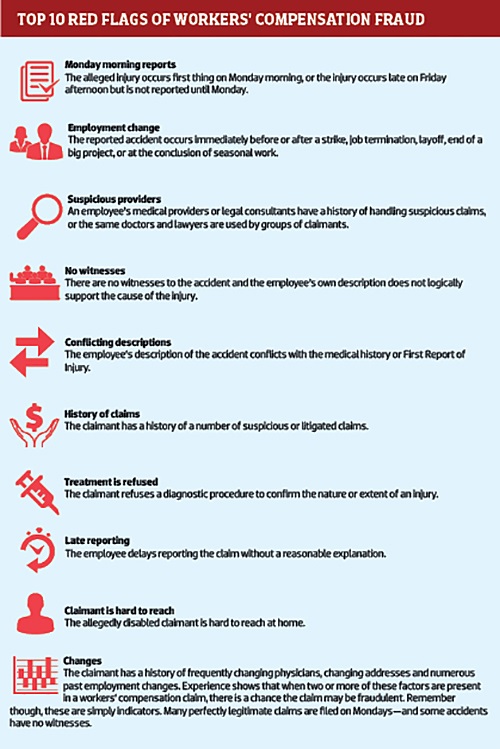Former New York City police officer Vincent Lamantia collected nearly $150,000 in disability payments before authorities discovered he was fraudulently claiming to suffer from depression following the trauma during the September 11, 2001 terrorist attacks.
Lamantia is only one of a number of workers’ compensation recipients who are abusing the system and artificially driving up premiums. According to a report from the National Insurance Crime Bureau, questionable insurance claims rose by 24% in the workers’ compensation sector.
While only a small portion of these claims turn out to be fraudulent, nearly 25% of claims are believed to be exaggerated.
In other words, employees are malingering—collecting indemnity checks and driving up medical costs beyond the period of the actual medical disability.
That creates a big problem, says Ranney Pageler, a former law enforcement officer who has brought roughly 800 cases of workers’ comp fraud to prosecution in his 24-year career.
“There aren’t a lot fraudulent claims, but the ones that are can be huge,” said Pageler, who now works as vice president in the fraud investigations department of workers’ comp insurer EMPLOYERS. “A fraudulent claim is going to artificially drive up premiums and make it much more expensive, not only for the employer, but for the industry in general.”
To protect clients from the costly effects of fraud, Pageler says independent agents must “put on their detective hat” and help the employer identify instances of fraud by sharing the following 10 red flags that indicate a worker may be up to no good.

Stamping out fraud starts with utilizing all available carrier resources. A quality workers’ compensation carrier offers agents resources to pass along to employers, including anti-fraud posters, payroll stuffers, training videos and an anonymous tip hotline or email inbox.
And before agents scoff at the seemingly simple measures, they should know that every dollar invested in workers’ compensation anti-fraud efforts returns roughly $6.17, according to a 2007 report from the California Insurance Department.
These resources are also highly utilized, says Pageler.
“You’d be surprised at how much use our hotline gets,” he said. “People get angry when someone is taking advantage of the system, so as soon as they figure out where to call, they do. We even get calls through our hotline that aren’t from our insureds.”
Of course, cracking down on fraud means walking a fine line between taking a relaxed approach to workers’ comp claims and staring over employees’ shoulders while they file injury forms. Using surveillance as a threat to get an employee to drop a claim is a major crime, while rules governing social media use in terms of workers’ compensation are constantly changing.
The bottom line?
“Be careful about who you prosecute,” Pageler said.
You may also enjoy: "Agents in danger as workers' comp premium fraud escalates"
"These voluntary benefits decrease client workers' comp costs"
"'Self-interested providers' drive up WC costs with compound drugs"


